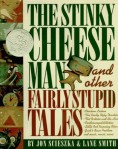Sit -- and take a stand!
But there have been several fiction and nonfiction books written recently that are really strong in the way they tell the ‘story’ of the people involved in the American Civil Rights Movement that have appealed to me. Books like Through my eyes by Ruby Bridges (379.263 BrT 1999 PIC BK), Claudette Colvin by Phillip Hoose (323.1196 HoC 2009), Sit-in by Andrea Davis Pinkney (323.1196 PiS 2010), A Sweet smell of roses by Angela Johnson , A Taste of colored water by Matt Faulkner, and One crazy summer by Rita Williams-Garcia (823 W6755O FIC).
They called themselves the KKK by Susan Campbell Bartoletti (322.42 BaT 2010) has also been brilliant to listen to as an audio book (read by Dion Graham) and gave me a lot of background information into race relations in the US. I would still recommend the book version as well, just for the illustrations and photos. Many primary documents are replicated which will work well in social studies classrooms and shouldn’t be missed.
So reading Viola Desmond won’t be budged! was timely. Finally, some Canadian history about Black Canadians and their struggle for equality.
In 1946, Viola Desmond went to watch a movie at the Roseland Theatre in New Glasgow, Nova Scotia. After purchasing her ticket, she found a seat but was quickly told that her ‘cheap’ ticket meant she had to sit upstairs not on the main floor. Her willingness to pay the difference, so she could sit where she wanted, made no difference as it became clear she was being asked to move because she was Black. Viola, refusing to move, was subsequently dragged off to spend the night in jail and was fined the next day in court. The charge was for tax evasion of one cent. The Nova Scotia Association for the Advancement of Coloured People tried to appeal her conviction but, due to a technicality, failed. This is the story of a strong woman taking a stand for change.
For additional resources related to the civil rights movement in Canadian go to this earlier posting.
Today is Nonfiction Monday being hosted by Capstone Connect. Check out other blogs that focus on nonfiction children's literature.




































